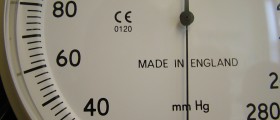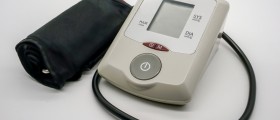
There are two numbers obtained in a blood pressure reading and systolic blood pressure is the blood pressure created in the blood vessels while the heart beats. Systolic blood pressure is the top number in a blood pressure reading and when it is over 1400mmHg, then it is considered to be high systolic. Diastolic blood pressure is the pressure in blood vessels when the heart is relaxed and an isolated systolic pressure is the condition when high systolic blood pressure does not have a matching level of diastolic blood pressure.
Measuring of high systolic blood pressure
Sphygmomanometer is an instrument that is used for measuring the blood pressure. It is wrapped around an arm and then inflated. The blood pressure reading appears in two numbers that appear like a fraction and the upper number represents systolic blood pressure, while the other is diastolic blood pressure.
Causes and symptoms of high systolic blood pressure
The real cause for the occurrence of high systolic blood pressure is not established yet, but there are several potential causes and risk factors. High systolic blood pressure tends to appear in men above 45 and women above 55 years of age and smoking, obesity and diabetes are only some of the possible causes of this condition.
Those people with high systolic blood pressure usually do not have any symptoms for years, but the fact is that they eventually appear, even after several years. In the majority of cases, only when the blood pressure is measured, the patients discover high systolic blood pressure.
Treatment of high systolic blood pressure
This condition is usually diagnosed after several readings and the measuring must be done in different days. The average systolic blood pressure after the measuring must be above 140mmHg in order to diagnose high systolic blood pressure. To treat high systolic blood pressure, one must take medications for blood pressure and it is also necessary to change the lifestyle and habits.
Complications of high systolic blood pressure
High systolic blood pressure is a condition that should be treated immediately, because if it is left untreated, it may cause certain serious complications. Untreated high systolic blood pressure may lead to the damage of the kidneys, as well as to the occurrence of stroke and heart attack. Furthermore, blindness and congestive heart failure may also occur. Although high systolic blood pressure cannot be cured, it can be kept under control with the appropriate treatment.

















Your thoughts on this
Loading...